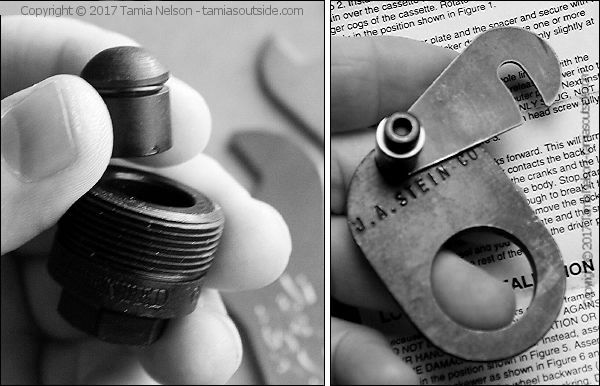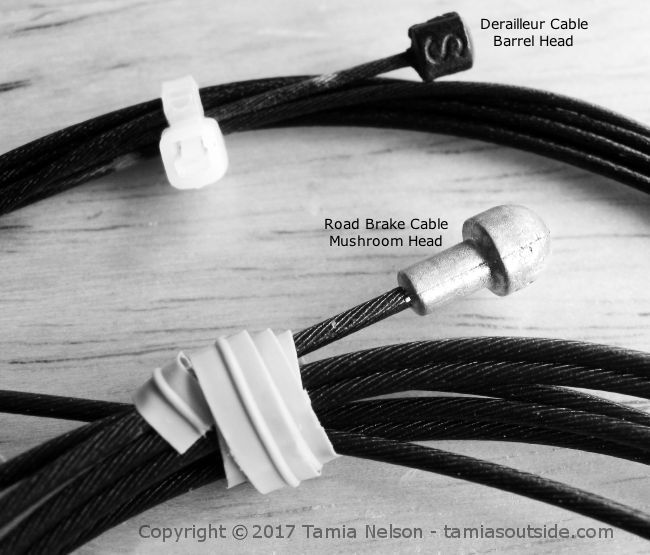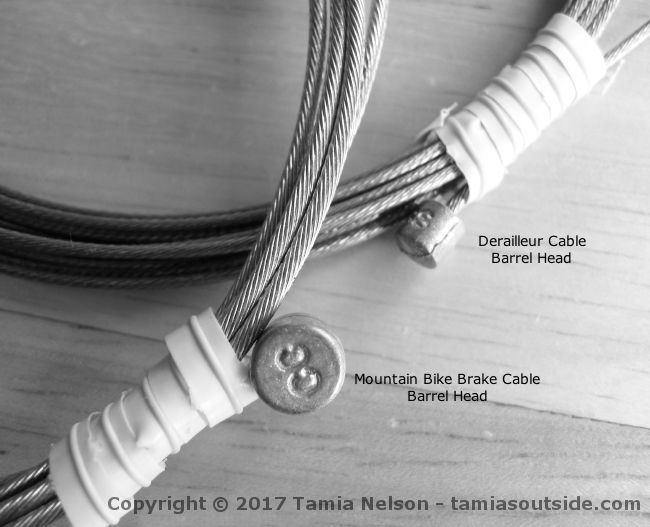Even the best mechanic needs her tools when roadside repairs are called for.
______________________________
by Tamia Nelson | March 28, 2015
You’re 50 miles from home on your bike, enjoying a day-long ride through the countryside. You’re on your own. And then trouble strikes. It could be a persistent knock with each revolution of the cranks. Or a front derailleur cable that gives up the ghost. Or maybe you hit a deep pothole and sheared a spoke on the drive side of your rear wheel. What do you do? Pull out your cell phone and call someone to come and pick you up? Is there cellphone coverage where you’re likely to meet with trouble? A five-mile ride down the road brings me to a dead zone with no cell coverage, and it stays that way for another 25 miles. There are no other services to be found, either. There aren’t even many houses. Yet it’s a great place to ride, with paved roads and wide shoulders, challenging grades, little traffic, and beautiful scenery—rich woods, verdant wetlands, and rolling hills. With luck, I might also glimpse an ambling bear. But it’s not a great place to meet with mechanical trouble.
In the other direction, the highway takes me toward civilization (such as it is). The roads are equally well maintained, but a breakdown here wouldn’t be any more convenient. There’s no public transportation, and no bike shop worthy of the name. But calling someone to haul me and my bike home just isn’t my style. So I always tool up to ride. I’ve written about my seat bag kit before, but here’s a review of what’s inside:
- Spare tire tube
- Self-adhesive patches
- Tire levers
- Hex wrenches
- Spoke wrench
- Chain tool
- Multi-tool
- Vinyl gloves
- Cotton rags
The seat pack is all I really need for local rides. For longer trips, though, when a walk back home would take me more than an hour or two, I bring a more complete inventory of tools. I call this my roadside repair kit, and I carry it in my handlebar bag.

Is my roadside repair kit heavy? Yes, but it’s not any heavier than a large, filled water bottle. I can live with the extra weight, especially considering the peace of mind it provides. Here’s a look at what the kit contains:

And here’s a rundown of the contents:
- Tire patch kit
- Combo Phillips and slotted screwdriver
- 8 mm Allen key
- 8 mm and 10 mm combo open-ended wrench
- Cone wrenches (13/15 mm and 17/18 mm)
- Combo wrench (31 mm and 36 mm headset spanner and 13/15 mm cone/pedal wrench)
- Lifu mini crank extractor
- Stein cassette remover
- Bottom bracket tool (not shown)
- Spare brake and derailleur cables (not shown)
- Rubber buffers cut from old inner tube (used to keep tools from clattering)
- Vinyl gloves
Most of these will be familiar to amateur mechanics, but there are two tools which aren’t so common—The Lifu mini crank extractor is on the left, and on the right is a J. A. Stein cassette remover by J. A. Stein (this one fits a Shimano cassette).

Items not shown in the photos above include…
Spare Cables. I carry spare brake and derailleur cables in a pocket in my ‘bar bag. These cables are not interchangeable, and to make matters more confusing still, different makers’ components require differently configured molded heads. So-called “universal” derailleur cables have a barrel head on one end and a disk head on the other. You cut off the end that you don’t need. It’s easiest to do this at home, by the way, using a cable cutter that doesn’t fray the wire. Brake cables are available with barrel heads (the name compounds the confusion, because these look just like the disk heads on derailleur cables) or mushrooms. Some universal brake cables are available, too, and as with universal derailleur cables, it’s best to do the preliminary cutting at home.
Here are some photos to help cut through the fog of confusing terms:

The cables in the picture above are Teflon-coated. Note that the brake cable is thicker than the derailleur cable. The brake cable is intended for standard drop-bar levers. Linear-brake levers require cables that look like this:

These cables are not Teflon coated. Note the barrel head on the brake cable. (The head on the derailleur cable is nearly identical to that in the preceding photo, despite having a different code stamped on it.)
To repeat what I said earlier: If you buy universal brake or derailleur cables, it’s best to trim off the unneeded head at home using a good pair of cable cutters. If you ever have to cut a cable on the road with the wire cutter on a pair of multi-tool pliers, you’ll see why it makes sense to do the job in advance. Not only will you get blisters in places you’ve never had blisters before, but the cut end of the cable is almost sure to be badly frayed. Good luck in threading that through the housing!
Is all of this a lot of trouble to go to just to prepare for an unlikely breakdown? I don’t think so. It’s just part of…
Being Prepared. Routine pre-ride checks and post-ride inspections help prevent nasty surprises on the road, but no preventative maintenance program is foolproof. Stuff happens, and when it does, I prefer self-sufficiency to dependency. In conjunction with the tools I carry in the saddle bag, my roadside repair kit allows me to meet almost any emergency. I can tighten loose pedals and cranks, adjust cones on pedals and wheels, tweak the threaded headset on my mountain bike, replace a spoke (I carry spares), pull a crank so I can tighten or service a bottom bracket, and remove (or snug down) any of the many fasteners on any of my bikes. The bottle opener on the combination headset wrench comes in handy, too.
But maybe you blanch at the idea of doing any repairs. Have no fear, though:
You Can Do It! If you can change a flat tire, you can learn how to maintain and repair your bike. Believe me, it’s worth the effort. You can’t always phone home, and it’s best not to rely on the kindness of strangers. More importantly, working on your bike makes you a better cyclist. A bicycle is personal transportation in its purest form. So why not get better acquainted with yours?

